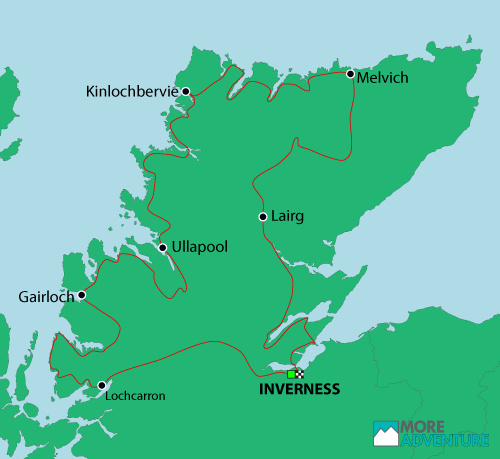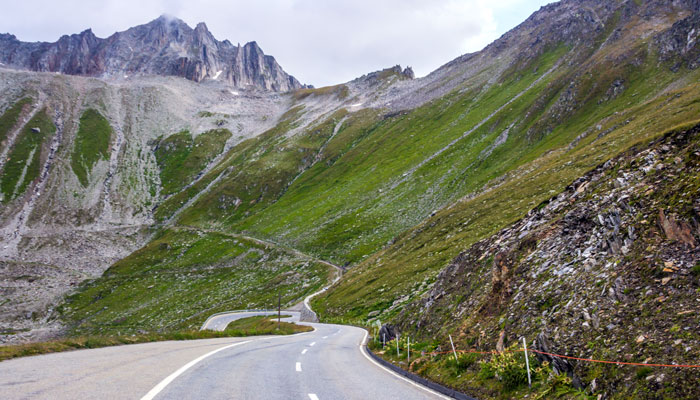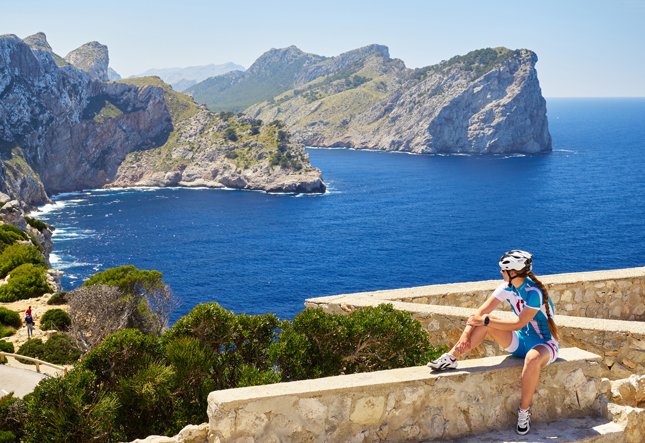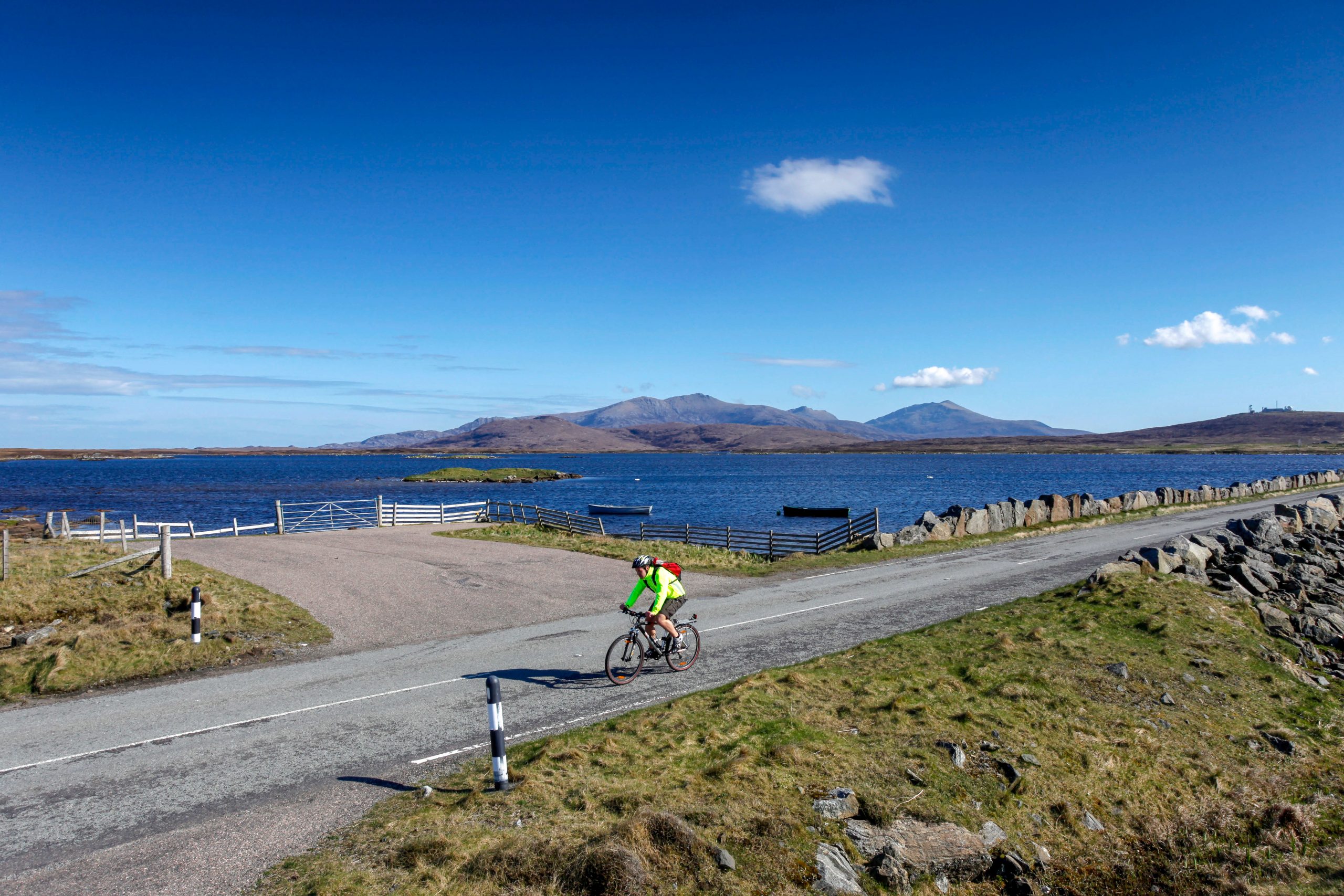
Cycling the North Coast 500 is a demanding trip with plenty of climbing and descending on some technically challenging roads through remote environments. An excellent level of fitness and road cycling experience is required. The weather is unpredictable at any time of year so you will also need to have experience riding in all conditions, come rain or shine.
You will be cycling for between six and eight hours each day but this is not a race! This is a group trip and we like to cycle as such. You will be cycling through rolling countryside which will be hilly, and the pace will be determined by your Cycle Leader. If you are unable to keep to this moderate pace, you will be asked to travel in the support vehicle.
You must prepare before coming on the trip, anything cardiovascular will help as will of course cycling. Importantly you need to do some 6+ hour cycles so you will know what is required. You will need to get some hill practice in!
A link to our trip grades that explains in depth our star rating is here: www.moreadventure.co.uk/cycling-grades
Itinerary
Day 1: Meet at Inverness hotel or train station
The Cycling the North Coast 500 trip begins at our hotel in Inverness. If you’re driving then we’ll meet you at the hotel and give details on where to park. If you prefer to arrive by public transport we can meet you at Inverness train station to transfer your bikes and luggage to the hotel. If you’re taking advantage of our bicycle and luggage transfer service, your More Adventure leaders will have your bikes and luggage ready for collection in the hotel. At the hotel you will be met by the More Adventure team for a trip briefing and evening meal in preparation for tomorrow’s ride.
Day 2: Inverness to Lochcarron
(65 miles & 2000 feet⇧ or 105km & 615m⇧)
After a wholesome and substantial breakfast in our hotel, we’ll load up the support vehicle then pedal around to Inverness Castle where our ride begins. After a few team photos, our route follows the River Ness west out of the city through Inchmore. Here we head to Beauly then onto the Muir of Ord, a village home to the Glen Ord Distillery and Muir of Ord Fort, a Neolithic henge and national monument of Scotland. Just beyond Contin is Rogie Falls, a stunning waterfall where it’s sometimes possible to see wild salmon leaping upstream. Our first climbs of the day feature here as we ascend to Loch Garve and Loch Luichart. At the small village of Achnasheen we head southwest to follow River Carron through stunning glens to Lochcarron where we’ll spend the night. This pretty town of white-washed cottages is situated on the shore of Loch Carron, the perfect place to unwind and relax before tomorrow’s ride.
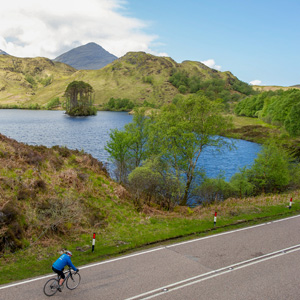
Day 3: Locharron to Gairloch
(80 miles & 7300 feet⇧ or 129km & 2200m⇧)
Cycling days don’t get much more memorable than this. We begin our ride after breakfast with a climb before descending to the mouth of the River Kishorn, ahead the mountain peak of Beinn Bhàn looms in the distance. At Tornapress we turn off the main road* and tackle one of the UK’s finest climbs, Bealach na Ba (Pass of the Cattle) which is the third highest road in Scotland at 623m. Featured in the UK’s top 100 climbs, this epic single-track stretch of tarmac ascends through a picture-postcard glen that dissects the Applecross peninsula. Just beyond the pass itself, a large layby provides one of the finest views of the sea and the Isle of Skye in the distance – it’d be a shame to whizz past so take it easy and make sure you stop for a photo! There’s a dazzling descent down to sea level at Applecross where we continue north along the coastal road until we reach Loch Torridon. Here we’ll hopefully have time to drop into Applecross Smokehouse for some world-famous smoked salmon, trout or cheese, and spot sea otters near Shieldaig Island. From the loch rises the mighty peaks of Torridon, Beinn Eighe, Liathach, and Beinn Alligin, all providing some of the most spectacular scenery in the whole country. At Kinlochewe we ride northwest onto the banks of Loch Maree to our overnight stop in the village of Gairloch.
*Please note that if you’d prefer a more leisurely ride today and want to skip the Bealach na Ba climb, it’s possible to continue north at Tornapress to Sheildaig and have more time to relax on Loch Torridon. This option would reduce today’s ride to 52 miles & 3000 feet⇧ or 84km & 900m⇧.
Day 4: Gairloch to Ullapool
(56 miles & 4300 feet⇧ or 90km & 1300m⇧)
Today is shorter than the previous two days but don’t be fooled, there are some considerable climbs today and the ride is undulating and challenging throughout. Our route begins northeast to Poolewe situated at the sheltered south side of Loch Ewe, then skirting around Dundonnell and Fisherfield Forest. This large mountainous area is situated between Loch Maree and Little Loch Broom and is nicknamed The Great Wilderness as it’s entirely devoid of permanent settlements. We descend past whitewashed cottages to Little Gruinard Beach at the mouth of the Inverianvie River. This immaculate sandy stretch of beach overlooks Gruinard Island which was made famous by the testing of biological weapons during the Second World War. You’ll be pleased to know they’ve cleaned up their act since! We climb up and out of the bay followed by a brilliant descent alongside Little Loch Broom with the craggy peaks of An Teallach (The Anvil) to our south. At Dundonnell our climb of the day begins. It’s steep at first but eases off as the landscape opens up and vast moorlands offer views to Sgurr Mor and other stunning peaks. During the descent we turn left at a T junction, passing Corrieshalloch Gorge National Nature Reserve, a mile-long canyon complete with rushing waterfalls and a Victorian suspension bridge. Continuing northeast we descend, following the River Broom to Loch Broom. Our destination this evening is the large lochside town of Ullapool which is an important port and considered the Gateway to the Northern Highlands. We’ll hopefully arrive in plenty of time for you to relax and explore the town of Ullapool, with it’s fine selection of restaurants, bars and live music.
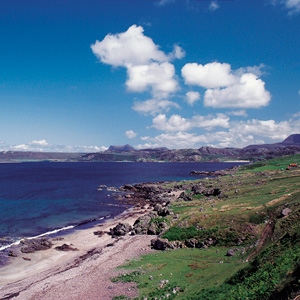
Day 5: Ullapool to Kinlochbervie
(80 miles & 7000 feet⇧ or 129km & 2100m⇧)
This is perhaps one of the toughest days of our North Coast 500 journey, with relentless undulations throughout, the scenery will however make it all worthwhile we promise! Our route begins northwest from Ullapool with a short climb before descending to Ardmair Beach, a stunning swathe of grey pebbled coastline with the table-top backdrop of Ben More Coigach. We then take an important left at Drumrunie and follow Loch Lurgainn with the iconic peak of Stac Pollaidh to our north. This unique mountain features a rocky crest of Torridonian sandstone, a ridge of many pinnacles and gullies that protrude from the smoother green sides of the mountain underneath. Just beyond Loch Bad a’ Ghaill we head northeast along a single-track road on a tough climb through heath and moorland. After crossing the River Kirkaig we pass through Inverkirkaig situated on a sheltered pebbled bay before arriving at the picturesque village Lochinver where we’ll regroup. This region is extremely popular with anglers due to over two hundred lochans (mini lochs) dotted around the area. As we skirt around these seemingly endless bodies of water, the road reveals some of the most beautiful landscapes of the trip including a magnificent viewpoint at Drumbeg that showcases this stunning coastline and then beyond the striking peaks of Quinag. A highlight of today’s ride is undoubtedly Kylesku bridge. 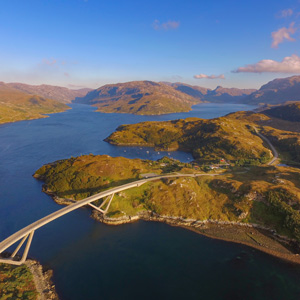 This iconic and innovative 275-metre long structure spans Loch a’ Chàirn Bhàin and is extremely deserving of a photograph or two! From the bridge we continue along the coast to Scourie with views of countless tiny islands before cutting inland to Laxford Bridge. At Rhiconich we turn northwest to our overnight stop of Kinlochbervie, the most northerly port on the west coast of Scotland.
This iconic and innovative 275-metre long structure spans Loch a’ Chàirn Bhàin and is extremely deserving of a photograph or two! From the bridge we continue along the coast to Scourie with views of countless tiny islands before cutting inland to Laxford Bridge. At Rhiconich we turn northwest to our overnight stop of Kinlochbervie, the most northerly port on the west coast of Scotland.
Day 6: Kinlochbervie to Melvich
(74 miles & 5600 feet⇧ or 119km & 1700m⇧)
The road from Rhiconich to Durness has to be one of the finest of the trip, carving its way through untamed moorland as you climb alongside craggy outcrops and wild plains to Loch Taebhaidh. From here a dazzling descent meets sea level at the Kyle of Durness as we finally reach the north coast of Scotland. Here we’ll continue east through magnificent coastal scenery, with picture-postcard turquoise sandy beaches that are positively tropical (though the temperatures will almost certainly not be!). If there’s time we’ll call into Smoo Cave, a sea and freshwater limestone cave just east of Durness, nearby it’s not uncommon to spot basking seals in the surf. Keep your eyes peeled for the beautiful bay at Ceannabeinne Beach before skirting around the edge of Loch Eriboll to tackle our biggest climb of the day – this is what cycling in Scotland is all about! After the descent we cross over the Kyle of Tongue before a smaller climb up to the village of Tongue. From here the road continues to undulate east with some sharp yet steep climbs and descents. The road just beyond the bridge crossing the River Naver is simply stunning, climbing up above the sandy estuary that’s very popular with horse riders all year round. From Bettyhill we pedal east to our overnight stop at Melvich.
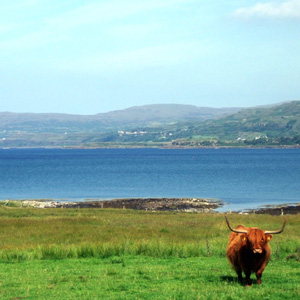
Day 7: Melvich to Lairg
(71 miles & 3000 feet⇧ or 114km & 900m⇧)
Today our journey diverts from the official North Coast 500 route to avoid the busy and dangerous A9 that runs south along the east coast. However, today’s roads are arguably some of the finest of the trip as we head directly south from Melvich, exchanging wild and rugged coastline for wild and rugged moorland. We begin by following the River Halladale south, this spectacular river has an abundance of birds and is also an extremely popular salmon fishing location. Keep your eyes peeled for Forsinard Flows, an RSPB nature reserve home to breeding waders, hunting hen harriers and herds of grazing red deer. Just beyond here marks the top of the first climb of the day where we follow the railway tracks to Kinbrace at the confluence of Claggan Burn and Bannock Burn. Here we head west through open moorland to the pretty red-roofed church at Syre. Just south of here is the clearance village of Rosal which is now simply the ruins of over seventy buildings. Once a thriving village community, the remains of the settlement are a reminder of the Highland clearances that changed the communities and landscapes of this region forever. We continue southwest along what might be considered one of the most scenic roads in Scotland, following the River Naver to Loch Naver. This spectacular stretch of tarmac lines the perimeter of the Loch Naver with the majestic peak of Ben Kilbreck looming in the distance. A highlight of the day is a stop at the Altnaharra Hotel, a renowned hunting and fishing lodge complete with some interesting taxidermy and an entertaining visitors book. From the hotel we follow the River Vagastie up to the Crask Inn which also marks our high point of the day. A fantastic descent then leads us to our penultimate hotel of the trip in the highland village of Lairg.
Day 8: Lairg to Inverness Castle
(76 miles & 3800 feet⇧ or 122km & 1200m⇧)
After a traditional Scottish breakfast in our hotel, we head south from Lairg past the Falls of Invershin. Nearby, the Kyle of Sutherland Development Trust is a community project promoting sustainable tourism development whilst creating employment opportunities for locals. We follow the Kyle of Sutherland to Bonar Bridge then onto Ardgay which is a great place to pick up souvenirs! Crossing the Kyle of Sutherland, we tackle the biggest climb of the day, the Struie. 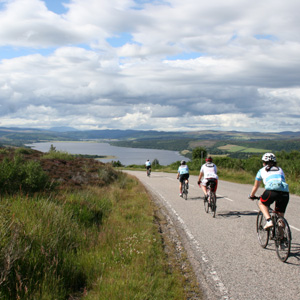 This 3.5km climb has an average gradient of 5.2% and a maximum of 21.1%. Stats aside, the views of the Dornoch Firth are simply spectacular, you should definitely find time to cross over to the large viewing area if you’re so inclined! There’s a brilliant descent to look forward to as we continue south towards Evanton and the Cromarty Firth. You’ll notice a difference in the roads as we approach Dingwall, we’re now in civilisation with more people, buildings and cars! Crossing over the River Conon, we turn off left towards Alcaig for a more scenic route with glorious views of the Cromarty Firth. Heading south we tackle our last major climb of the trip through Millbuie and Findon Forest to Rosemarkie where we might have time to spot bottlenose dolphins, grey seals and Fort George across the Moray Firth. It’ll be a bittersweet final few miles as we ride southwest to cross the Kessock Bridge and into Inverness where your incredible journey ends where it began, at Inverness Castle. Congratulations, you’ve just cycled our North Coast 500 route, it’s time for a celebratory meal and our final night together in our hotel in Inverness.
This 3.5km climb has an average gradient of 5.2% and a maximum of 21.1%. Stats aside, the views of the Dornoch Firth are simply spectacular, you should definitely find time to cross over to the large viewing area if you’re so inclined! There’s a brilliant descent to look forward to as we continue south towards Evanton and the Cromarty Firth. You’ll notice a difference in the roads as we approach Dingwall, we’re now in civilisation with more people, buildings and cars! Crossing over the River Conon, we turn off left towards Alcaig for a more scenic route with glorious views of the Cromarty Firth. Heading south we tackle our last major climb of the trip through Millbuie and Findon Forest to Rosemarkie where we might have time to spot bottlenose dolphins, grey seals and Fort George across the Moray Firth. It’ll be a bittersweet final few miles as we ride southwest to cross the Kessock Bridge and into Inverness where your incredible journey ends where it began, at Inverness Castle. Congratulations, you’ve just cycled our North Coast 500 route, it’s time for a celebratory meal and our final night together in our hotel in Inverness.
Day 9: Trip ends in Inverness
After breakfast in our hotel we say our farewells and the trip ends. If you’re taking advantage of our bicycle and luggage transfer service, your More Adventure leaders will be driving your bikes and luggage to your home or chosen destination. If you’re flying or getting a train home, it may be possible for the team to help with transferring your bicycle and luggage to the airport or train station.
This itinerary is a guide only and can sometimes be subject to change due to unforeseen circumstances. Whilst we endeavour to uphold the proposed daily mileages, this cannot be guaranteed due to changes to hotel bookings.
The single room supplement on this trip is £400, payable upon balance payment.
FAQs
I would like to book for one person only. Can I share a room?
At the time of writing it is not possible to share a room with someone from a different household. For this reason we would ask you to book as a single person, check the box for the single room supplement (it's not payable until you pay the balance) and email us to let us know you'd prefer to share a room if possible. If the rules change closer to the trip then we'll do our very best to put you in a twin room but we cannot promise this will be the case and you will be liable for the single room supplement.
How do I get my bike and luggage to Inverness?
We are running our ever-popular bicycle and luggage transfer for this trip and further details will be issued upon booking.
Why isn't the route the official North Coast 500 route?
Having spent years cycling all over Scotland, we felt that the A9 down the east coast was one road we would never cycle on. It's fast, busy and dangerous for a cyclist and therefore we have chosen a scenic and far quieter route through the centre of Scotland.
How tough is the ride?
Cycling the North Coast 500 in seven days is a challenging ride with plenty of climbs, some technical descents and the best (and worst!) of Scottish weather to contend with. It is designed for experienced riders who are familiar with long days in the saddle and challenging terrain.

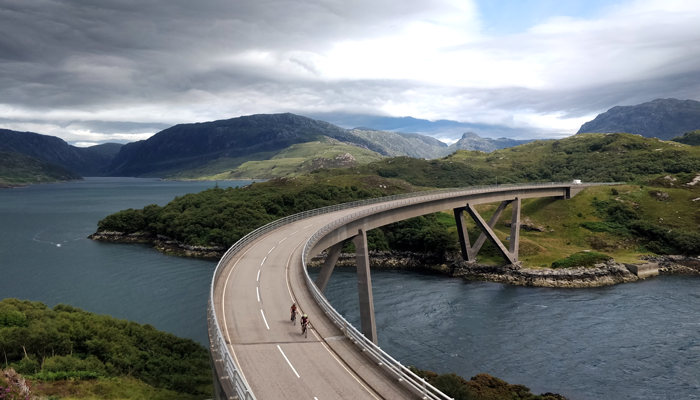
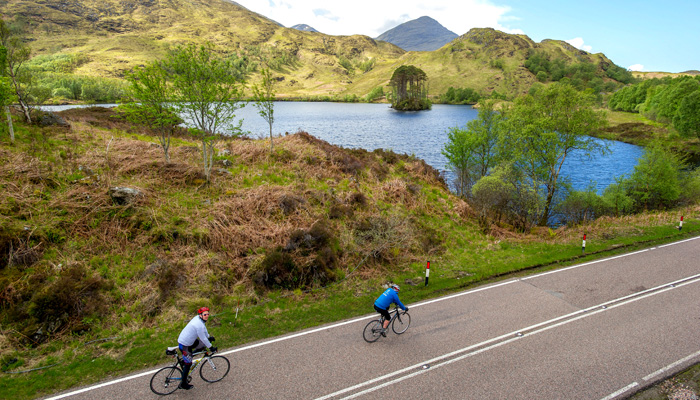
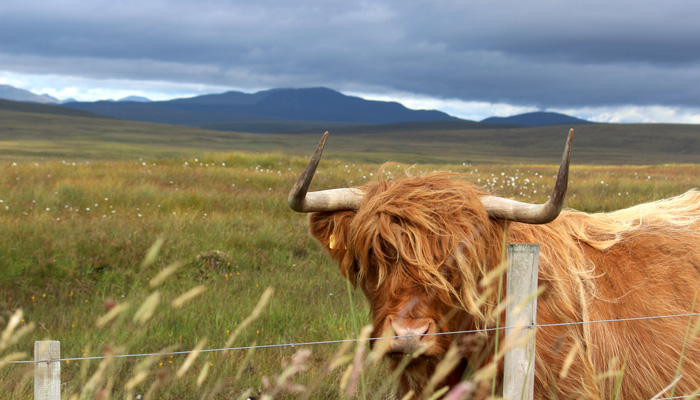
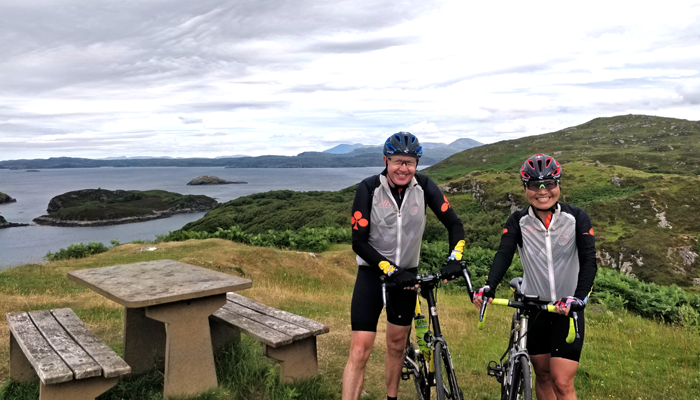
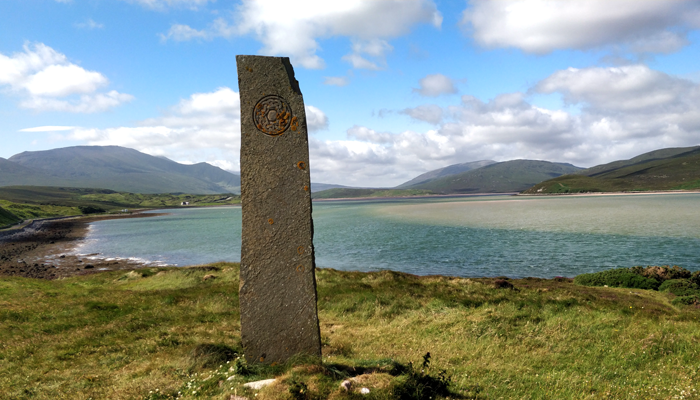
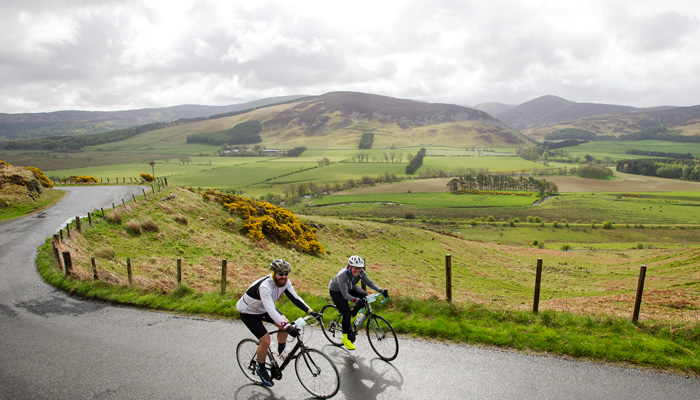
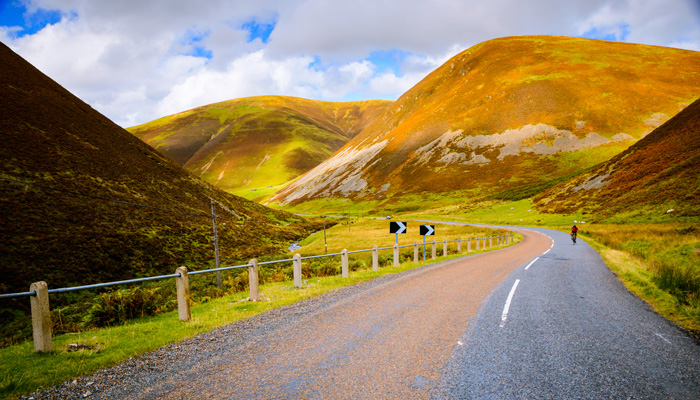
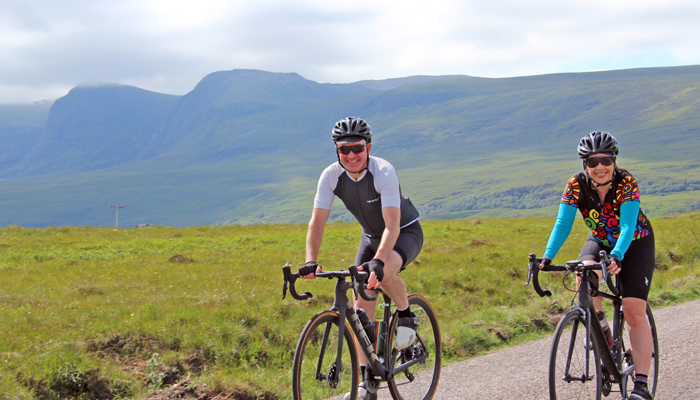
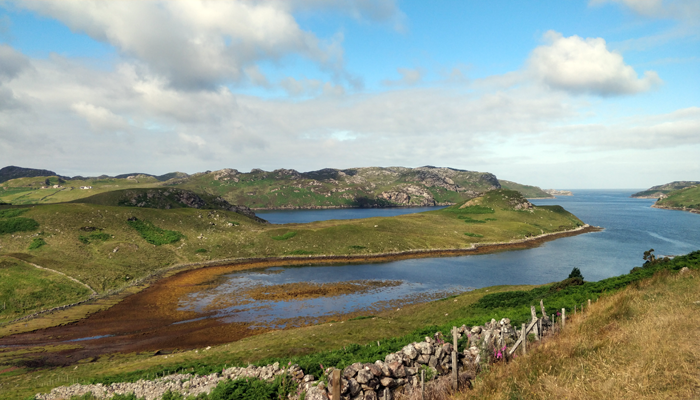
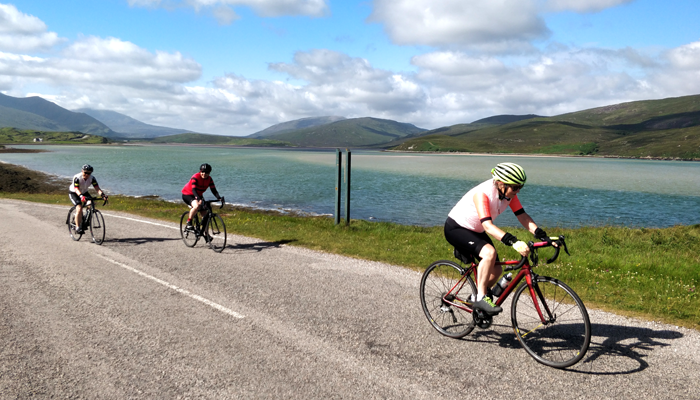
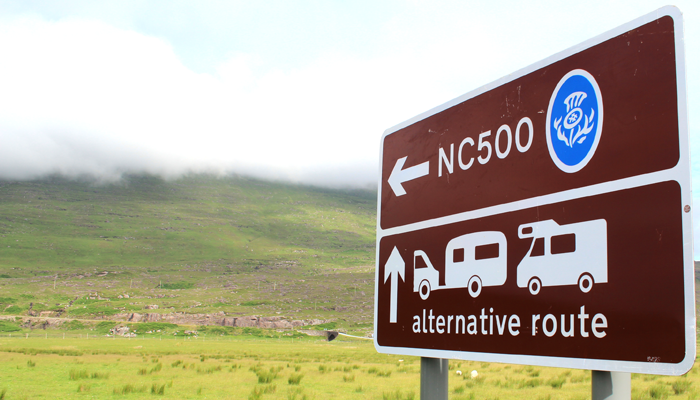
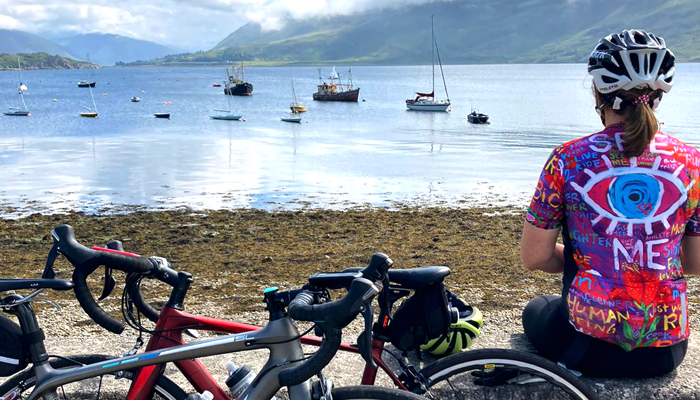
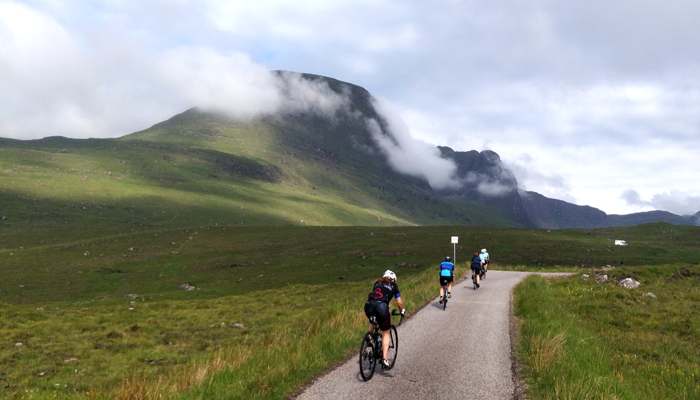
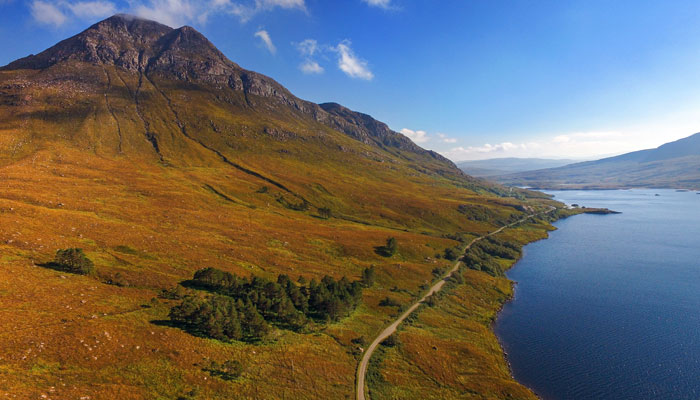
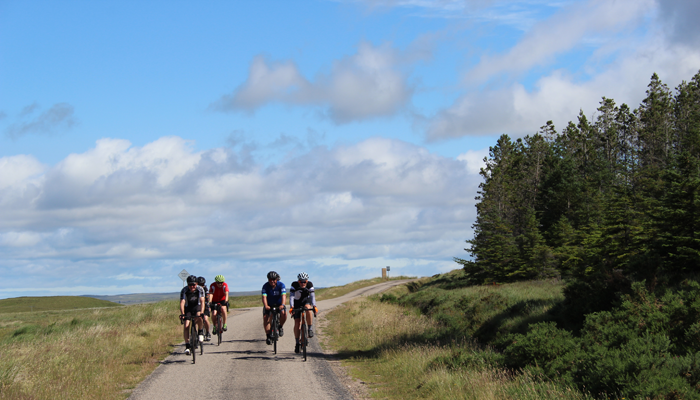
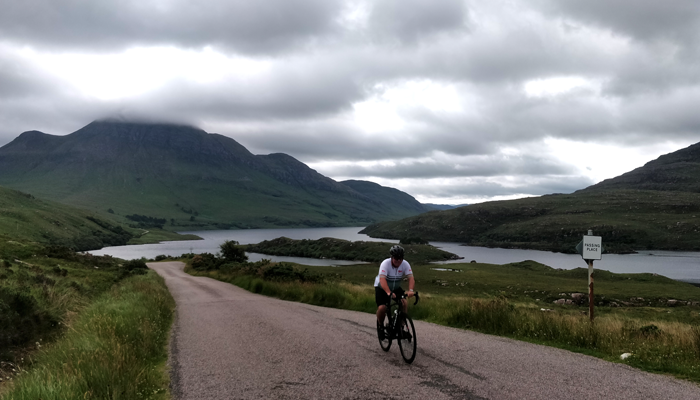
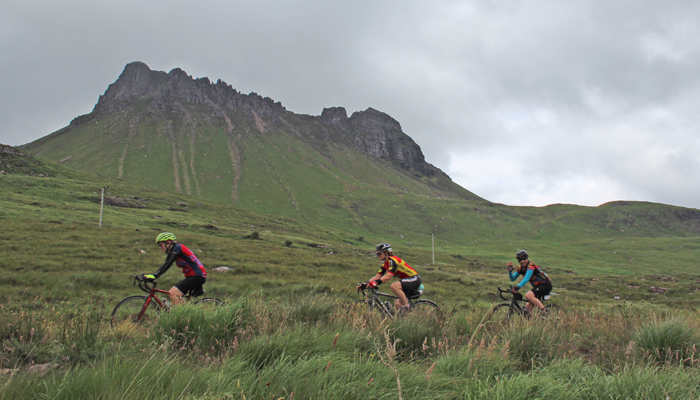



 This iconic and innovative 275-metre long structure spans Loch a’ Chàirn Bhàin and is extremely deserving of a photograph or two! From the bridge we continue along the coast to Scourie with views of countless tiny islands before cutting inland to Laxford Bridge. At Rhiconich we turn northwest to our overnight stop of Kinlochbervie, the most northerly port on the west coast of Scotland.
This iconic and innovative 275-metre long structure spans Loch a’ Chàirn Bhàin and is extremely deserving of a photograph or two! From the bridge we continue along the coast to Scourie with views of countless tiny islands before cutting inland to Laxford Bridge. At Rhiconich we turn northwest to our overnight stop of Kinlochbervie, the most northerly port on the west coast of Scotland.
 This 3.5km climb has an average gradient of 5.2% and a maximum of 21.1%. Stats aside, the views of the Dornoch Firth are simply spectacular, you should definitely find time to cross over to the large viewing area if you’re so inclined! There’s a brilliant descent to look forward to as we continue south towards Evanton and the Cromarty Firth. You’ll notice a difference in the roads as we approach Dingwall, we’re now in civilisation with more people, buildings and cars! Crossing over the River Conon, we turn off left towards Alcaig for a more scenic route with glorious views of the Cromarty Firth. Heading south we tackle our last major climb of the trip through Millbuie and Findon Forest to Rosemarkie where we might have time to spot bottlenose dolphins, grey seals and Fort George across the Moray Firth. It’ll be a bittersweet final few miles as we ride southwest to cross the Kessock Bridge and into Inverness where your incredible journey ends where it began, at Inverness Castle. Congratulations, you’ve just cycled our North Coast 500 route, it’s time for a celebratory meal and our final night together in our hotel in Inverness.
This 3.5km climb has an average gradient of 5.2% and a maximum of 21.1%. Stats aside, the views of the Dornoch Firth are simply spectacular, you should definitely find time to cross over to the large viewing area if you’re so inclined! There’s a brilliant descent to look forward to as we continue south towards Evanton and the Cromarty Firth. You’ll notice a difference in the roads as we approach Dingwall, we’re now in civilisation with more people, buildings and cars! Crossing over the River Conon, we turn off left towards Alcaig for a more scenic route with glorious views of the Cromarty Firth. Heading south we tackle our last major climb of the trip through Millbuie and Findon Forest to Rosemarkie where we might have time to spot bottlenose dolphins, grey seals and Fort George across the Moray Firth. It’ll be a bittersweet final few miles as we ride southwest to cross the Kessock Bridge and into Inverness where your incredible journey ends where it began, at Inverness Castle. Congratulations, you’ve just cycled our North Coast 500 route, it’s time for a celebratory meal and our final night together in our hotel in Inverness.